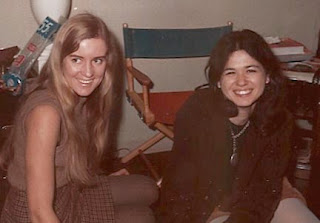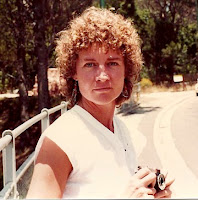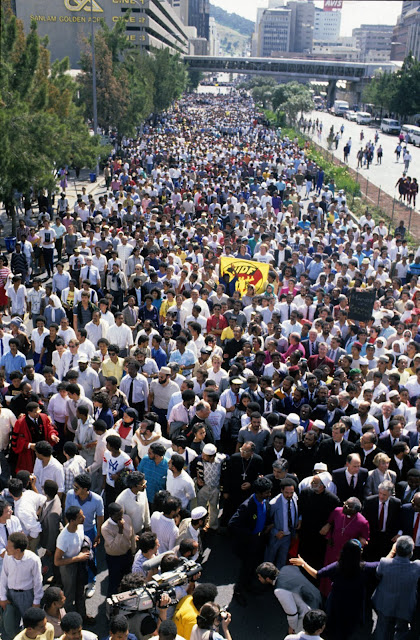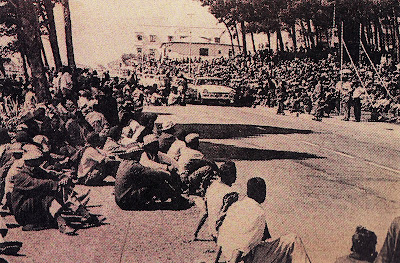Sally (left) and Stephanie soon after arriving in North America
Sally (right) and me at a restaurant in Kalk Bay in February
Sally was in Cape Town when I first arrived, and so we had time to talk about our responses to "home". The following are her thoughts, in part in response to the previous guest blog by Dan O'Meara:
___________________________________________________________________
February 23, 2011
It is 6 a.m. and I am sitting up in my bed in the Hermanus B&B I will occupy for the last four days of my holidays, typing on my laptop. The place is situated right on the cliff path in Westcliff, and from my bed I can hear the rumble of the waves against the rocks and the tentative, creamy early morning calls of a Cape robin just outside my window. These sounds are two of the clearest – and dearest - aural memories of my childhood. There is only one cliché that does justice to the way I feel when I hear them: my heart swells with love. It does not matter that Hermanus is now a dreary tourist trap full of crappy “curios” and clothing stores through which women shuffle like robots, searching for the perfect garment to turn mutton into lamb. Step onto the cliff path and the Hermanus of my childhood is still there, and I love it as much as I did then. The rocks and aromatic bushes and flowers and waves and birds that I knew in great detail when young are still there and they are a vital part of what I can only describe as my home.
Hermanus
I started writing something in response to your blog a good week ago, prompted by an incident I observed on the beach at Fish Hoek. But then you sent me Dan’s piece, and after reading it I almost abandoned doing one myself, because I felt that he was expressing something very close to what I was feeling, which was that Cape Town was no longer my home. And then slowly, as I wandered around the peninsula with a Canadian friend in tow who was constantly gasping in amazement at everything she saw, I began to change my mind. Her enthusiasm was clearly genuine, giving me enormous pleasure but also, I became aware, great pride. Surely you can only be proud of something that is yours, a part of you in some way that can never be lost. What can be more “yours” than the place where you were born and spent your formative years? So I picked up the challenge again.
Sally on Fish Hoek beach
I suspect that what Dan is expressing, at least in part, is a deep disappointment at the way things have turned out since 1994. It is a disappointment that I am sure most of us share, to a greater or lesser degree. We may no longer feel “at home” here, for a variety of reasons, but does this mean that some particular part of this country is not still our home, the cradle of our being, what made us what we are at the most fundamental level?
No matter what has happened to Dan or any of us since, the game plan was mapped out here, for all of us expats. And we love it because it is so deeply in our bones, this country that is such a compelling and extraordinary set of contradictions.
Sally in South Africa in 1982 on a visit we made together
So yes, the taste of biltong or Marmite, the smell of resin under pine trees baking in the sun, the power and thunder of the waves at Hermanus when they crash against the rocks, the way a coloured vendor of fish or flowers cracks a joke while you try to make up your mind what to buy, and you both pause in your business to fall about laughing : these things tug at memory and make our hearts beat like a lover’s. I do not think that we are talking about “mere nostalgia”. I think we are talking about love and the core of our being.
But – and of course it is a big but – it does not mean that we are all ready to “come back home”. Every time I come here I fantasize briefly about living in the sun again, getting away from those long dark cold Canadian winters. I even think I can learn to cope with the violence, the crowding and congestion, the pollution, the desecration of so much of the natural beauty of the peninsula. And then something happens to bring me back to reality again.
But – and of course it is a big but – it does not mean that we are all ready to “come back home”. Every time I come here I fantasize briefly about living in the sun again, getting away from those long dark cold Canadian winters. I even think I can learn to cope with the violence, the crowding and congestion, the pollution, the desecration of so much of the natural beauty of the peninsula. And then something happens to bring me back to reality again.
Like the Fish Hoek incident last week. I was walking on the beach with my Canadian friend at 7 a.m., a habit we had started upon our arrival. The usual elderly swimmers were there, and dog walkers strode along energetically while their dogs tore about in noisy ecstasy. There was a white woman walking in front of us, with two Jack Russells at her heels. She was gradually gaining on a black man who was walking more slowly ahead of her.
As she drew nearer, her dogs shot forward and danced around the black man’s legs, nipping at his ankles. He yelled at the woman, while trying to leap out of the dogs’ range. She began flapping her hands ineffectively; it was not clear whether she was encouraging the dogs or trying to control them.
At that moment a tall, gangly white man jogged past us. As he drew abreast with the black man he said, with a broad smile and an even broader accent, “Clever doggies, clever doggies”.
My blood was instantly on the boil, that old reaction of fury and shame, and before I could think I yelled “I suppose you think that is funny, you arsehole!” which was about as silly and ineffective as the dog owner’s flapping of hands. Then the whole business just fizzled out, as quickly as it had started, and my friend and I, the woman and her racist dogs, and the black man put some distance between each other and continued walking as though nothing had happened. The white man was way ahead of us.
It is still there, deeply entrenched, spreading poison everywhere. Too many generations will have to go to school together, work together, fall in love with each other and have children together before it leaches out. And much damage will continue to be done before that happens. I would go crazy if I lived here.
When I am planning a visit, I don’t say I am going home, I say, I am going to South Africa, where I come from. When people ask me where I’m from I say I am a South African but I have lived in Montreal for over forty years. When people ask me when my holiday will end, I say, I am going home on Friday. Montreal means where my life is, my children, my grandchildren, my friends, my man, my activities. It is my home in that sense.
But Cape Town is where I was made. Nothing can change that.
ÓSally Spilhaus 2011






